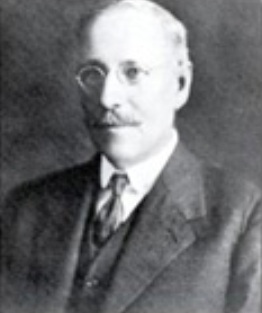John Bowser facts for kids
Quick facts for kids
Sir John Bowser
|
|
|---|---|
 |
|
| 26th Premier of Victoria | |
| In office 29 November 1917 – 21 March 1918 |
|
| Preceded by | Alexander Peacock |
| Succeeded by | Harry Lawson |
| 13th Speaker of the Victorian Legislative Assembly | |
| In office 30 April 1924 – 5 March 1927 |
|
| Preceded by | John Mackey |
| Succeeded by | Oswald Snowball |
| Personal details | |
| Born | 2 September 1856 Islington, London, England, UK |
| Died | 10 June 1936 (aged 79) Wangaratta, Victoria, Australia |
| Political party | Nationalist |
| Spouse |
Frances Rogers
(m. 1914) |
| Alma mater | University of Edinburgh |
Sir John Bowser (born September 2, 1856 – died June 10, 1936) was an important Australian politician. He served as the 26th Premier of Victoria, which is like being the leader of the state government.
He was born in London, England, and moved to Melbourne, Australia, with his family when he was a child. He grew up in Bacchus Marsh. After school, he worked for a local newspaper called the Bacchus Marsh Express.
Later, he traveled to Scotland and studied at the University of Edinburgh. While there, he also worked on newspapers. When he returned to Australia, he settled in Wangaratta. He became a farmer and managed the Wangaratta Chronicle newspaper, eventually buying it.
Contents
Sir John Bowser's Political Journey
Starting in Parliament
In October 1894, John Bowser was elected to the Victorian Legislative Assembly. This is like being a member of the state parliament. He represented the area of Wangaratta and Rutherglen.
Over the years, the name of his electoral area changed. It became Electoral district of Wangaratta in 1906. Then, in 1927, it was renamed Electoral district of Wangaratta and Ovens. Bowser held this seat for a very long time, until November 1929. In total, he represented Wangaratta for 35 years!
Early Government Roles
From 1908 to 1909, Bowser served as the Minister for Public Instruction. This role was in the Liberal government led by Thomas Bent. After this, he did not hold another government position until he became Premier.
He became a key leader of a group within the Liberal Party. This group was called the Economy Party. They were mostly from country areas. They wanted better roads and railways for their districts. They also aimed to reduce government spending. They believed country areas should have a strong voice in parliament.
Becoming Premier of Victoria
A Big Change in Government
In 1917, the Premier at the time, Alexander Peacock, decided to increase train fares in the country. He said it was necessary because the Victorian Railways were losing money. John Bowser and his group strongly disagreed with this decision.
In protest, Bowser led his group to oppose Peacock's government. During the election in November, Bowser's supporters won many seats. They secured 27 seats, while the Labor Party won 18. Peacock's Liberals won 12, and the Victorian Farmers Union won four.
Bowser Takes Charge
Because of these election results, Premier Peacock resigned. John Bowser then became the new Premier of Victoria. One of his first actions was to cancel Peacock's train fare increases. However, he still faced the big problem of how to make the railways financially stable.
In May 1918, Bowser's government faced a challenge in parliament. All the other political parties voted against a bill about railway spending. This meant his government was defeated.
Later Political Life
Resigning and New Roles
John Bowser was not very keen on being Premier. After his government was defeated, he quickly resigned. Another Liberal politician, Harry Lawson, then formed a new government. This government included different Liberal groups.
In this new government, Bowser took on two important roles. He became the Chief Secretary and the Minister for Public Health. He held these positions until 1919.
Joining a New Party and Retirement
In 1921, Bowser joined a new political party called the Country Party. In 1924, he was chosen to be the Speaker of the Victorian Legislative Assembly. This is a special role that helps run the parliament meetings fairly. It was becoming a common honor for former Premiers.
John Bowser was knighted in 1927, which means he received the title "Sir." He retired from politics in 1929 after a long and successful career.
A Railway Station Named After Him
In 1922, a railway station located just north of Wangaratta was named after him. This was a way to honor his contributions.

